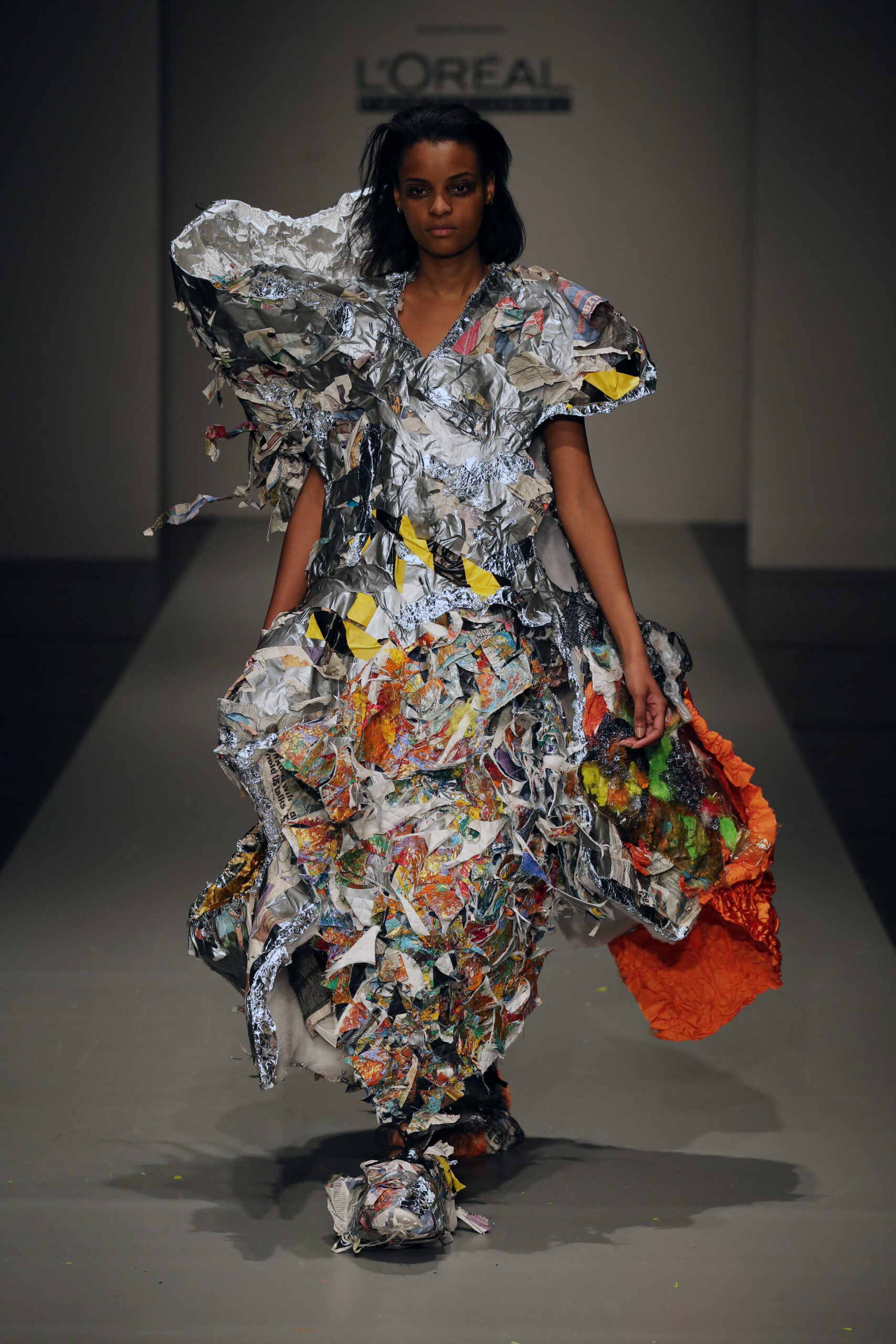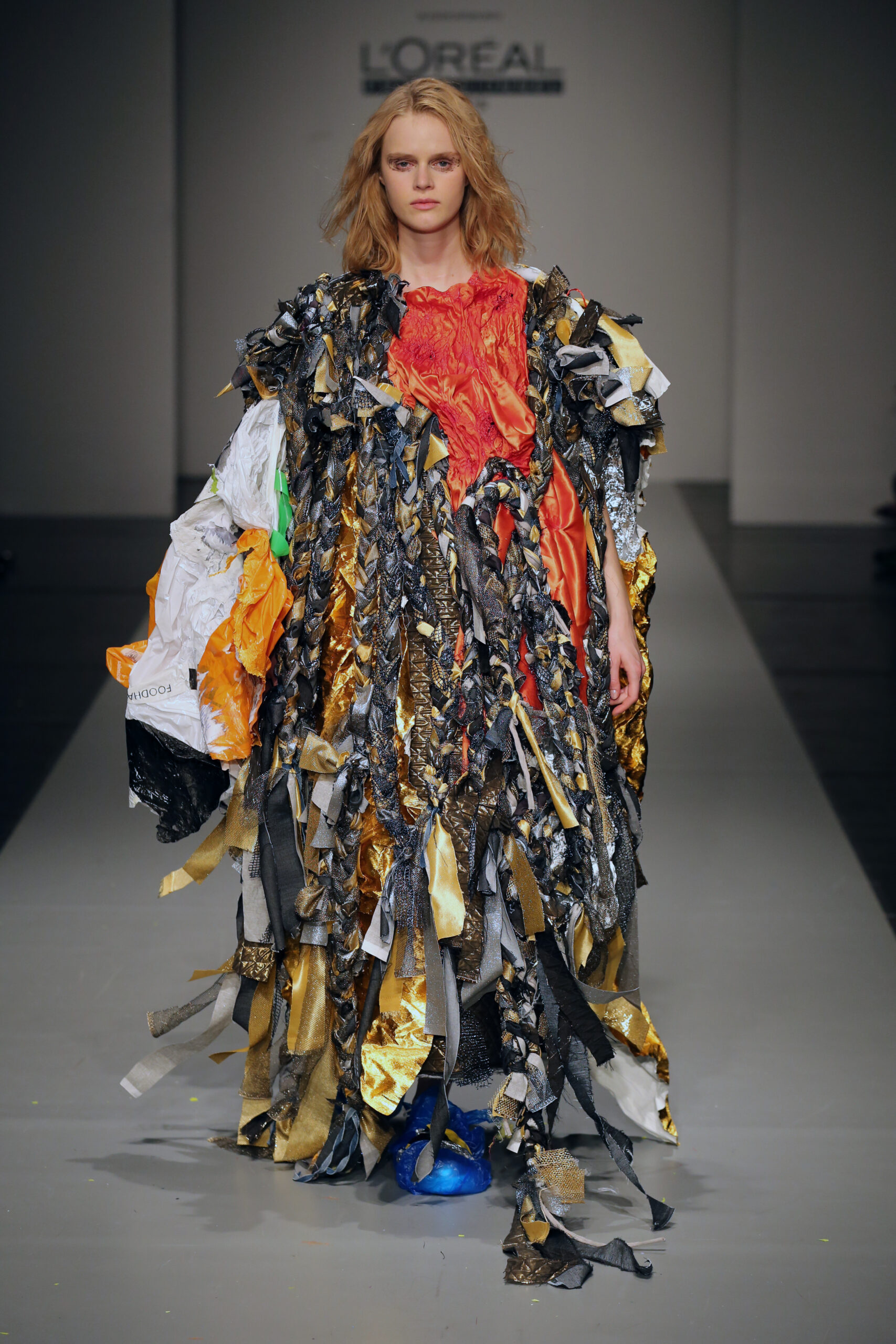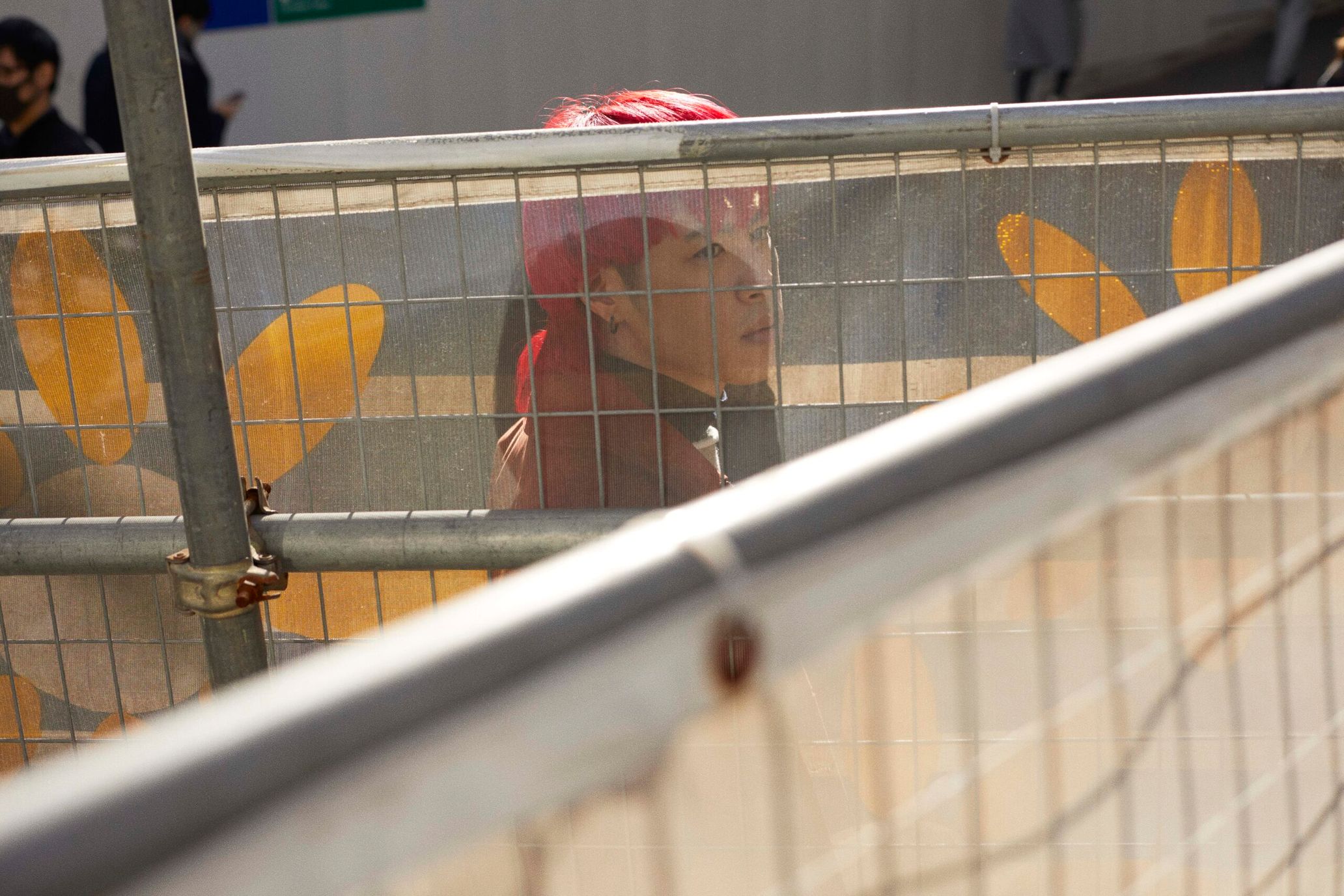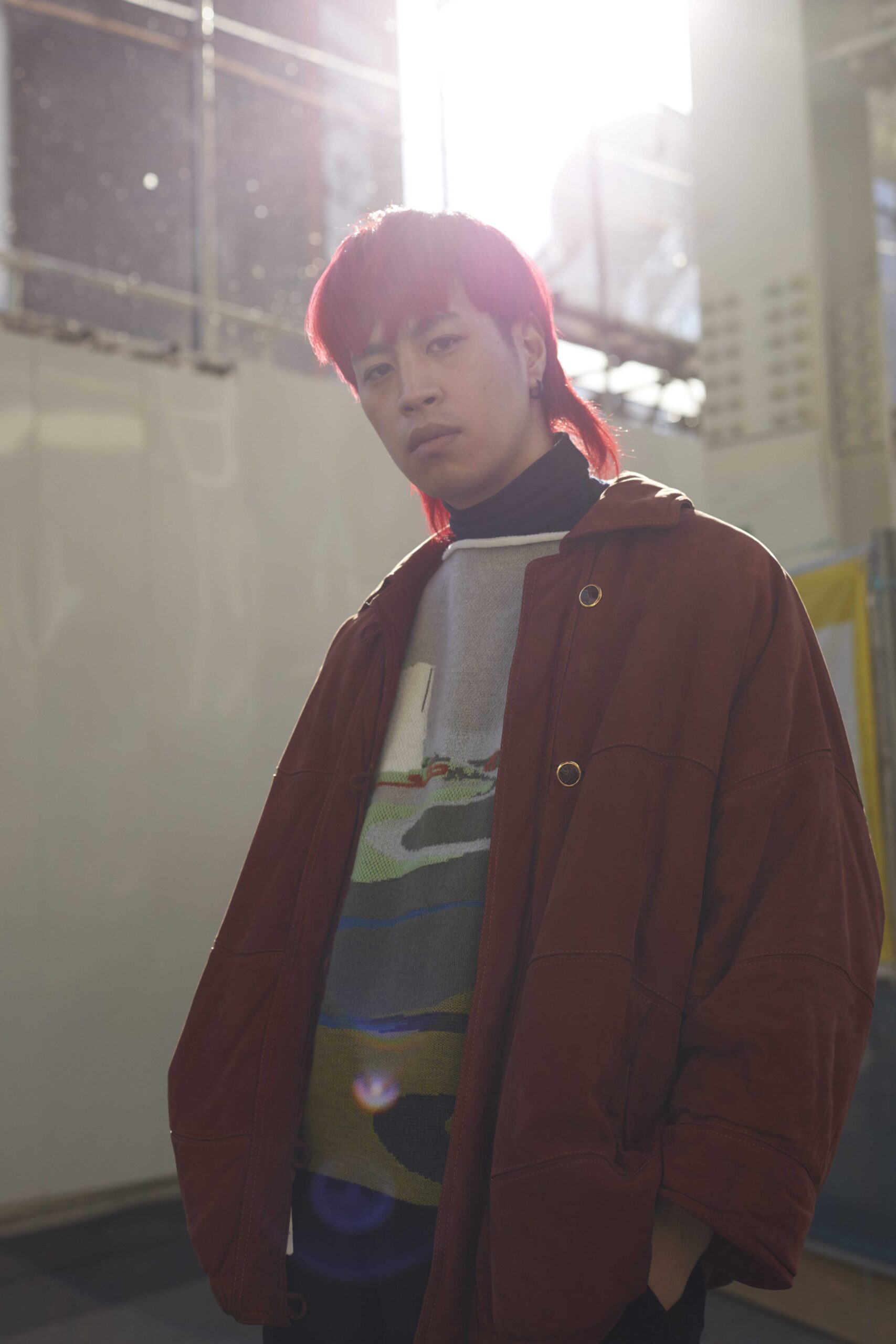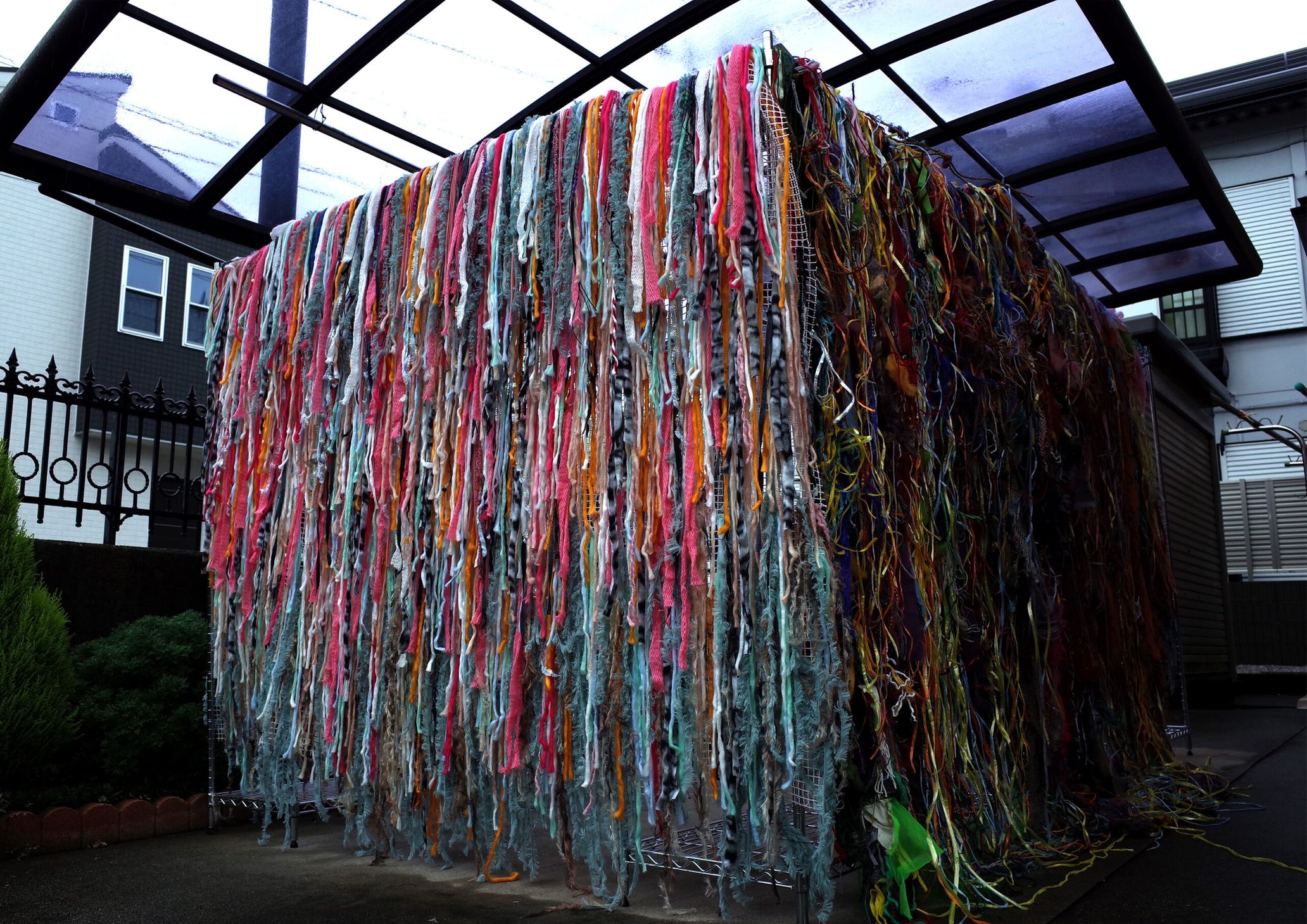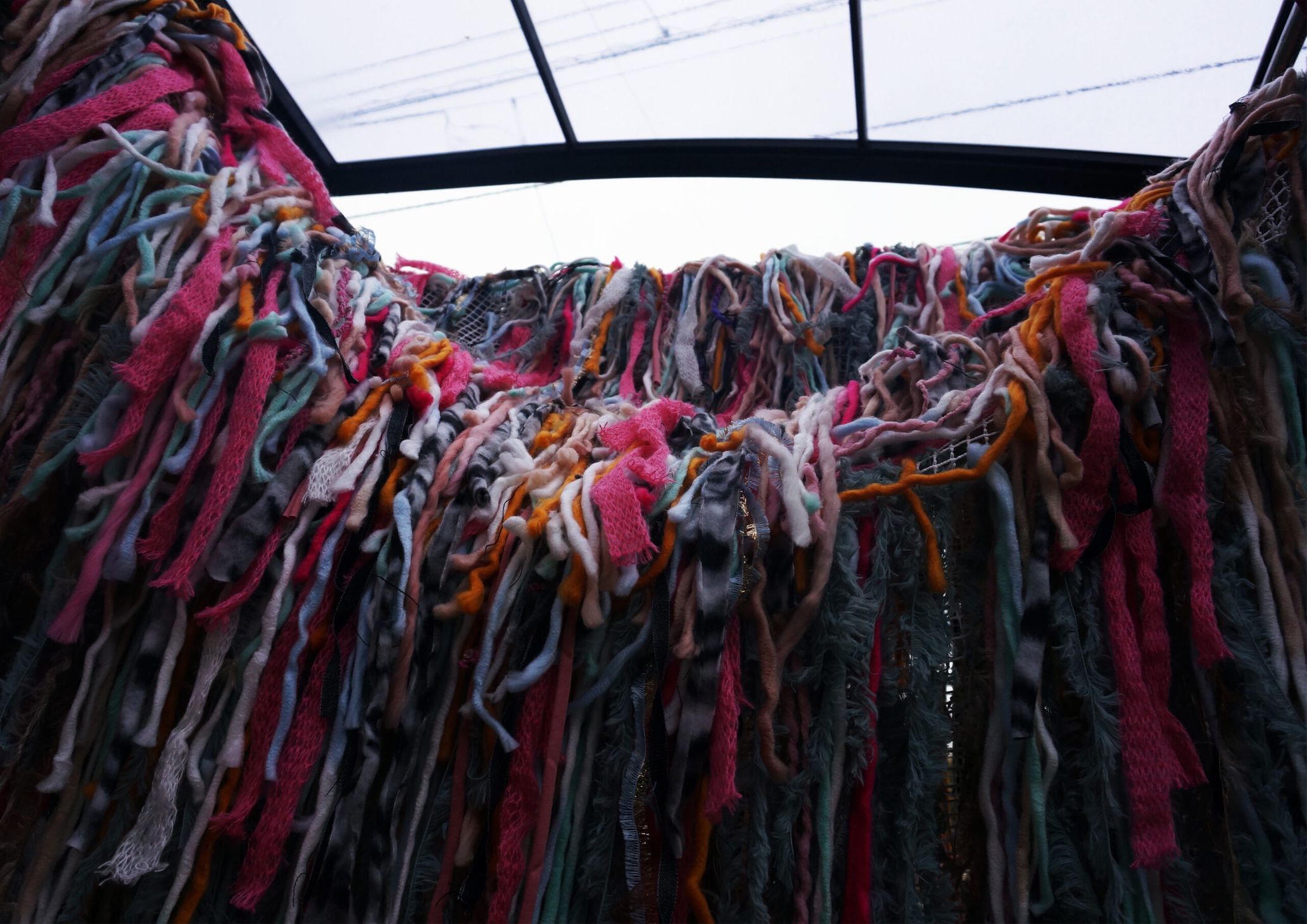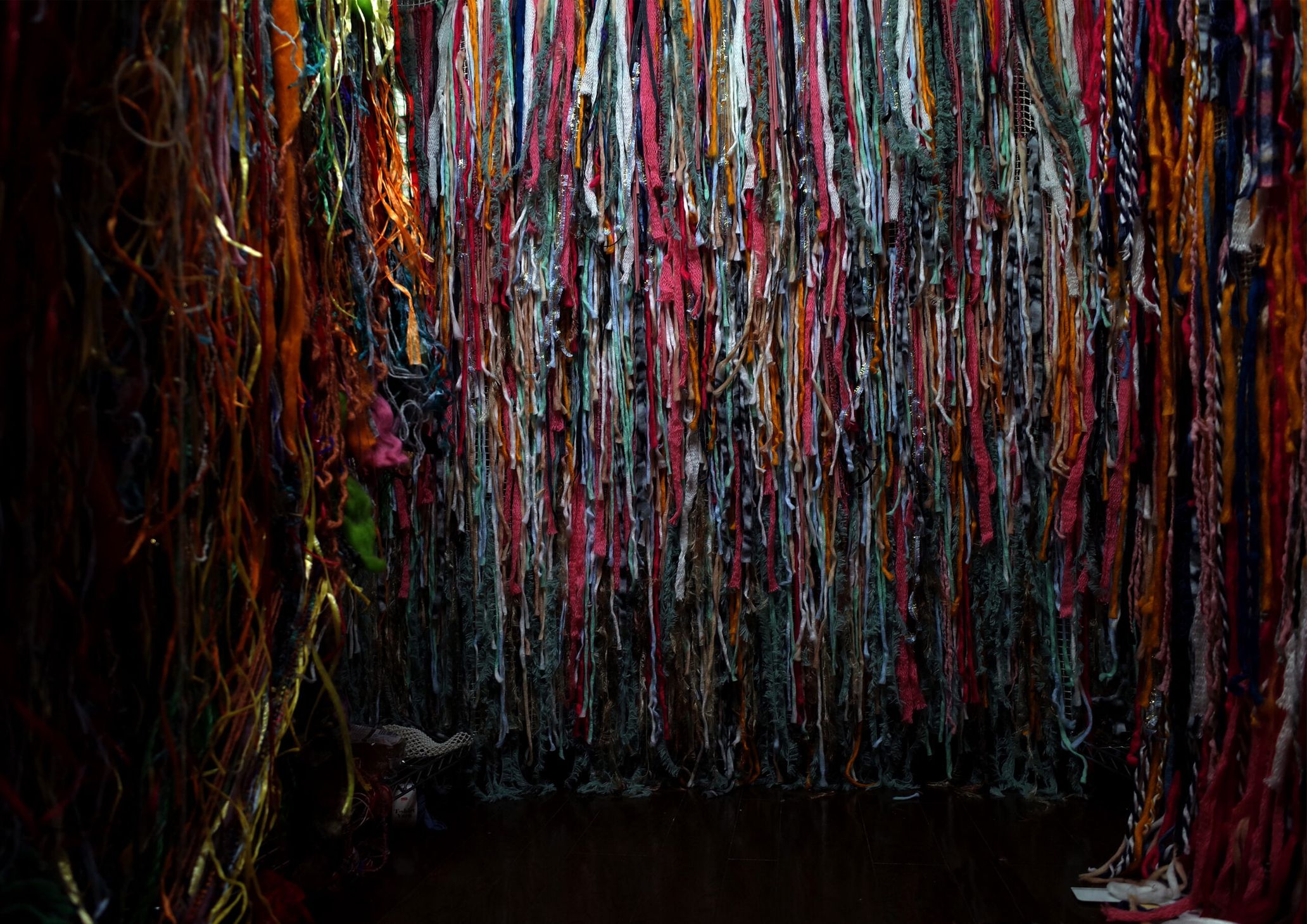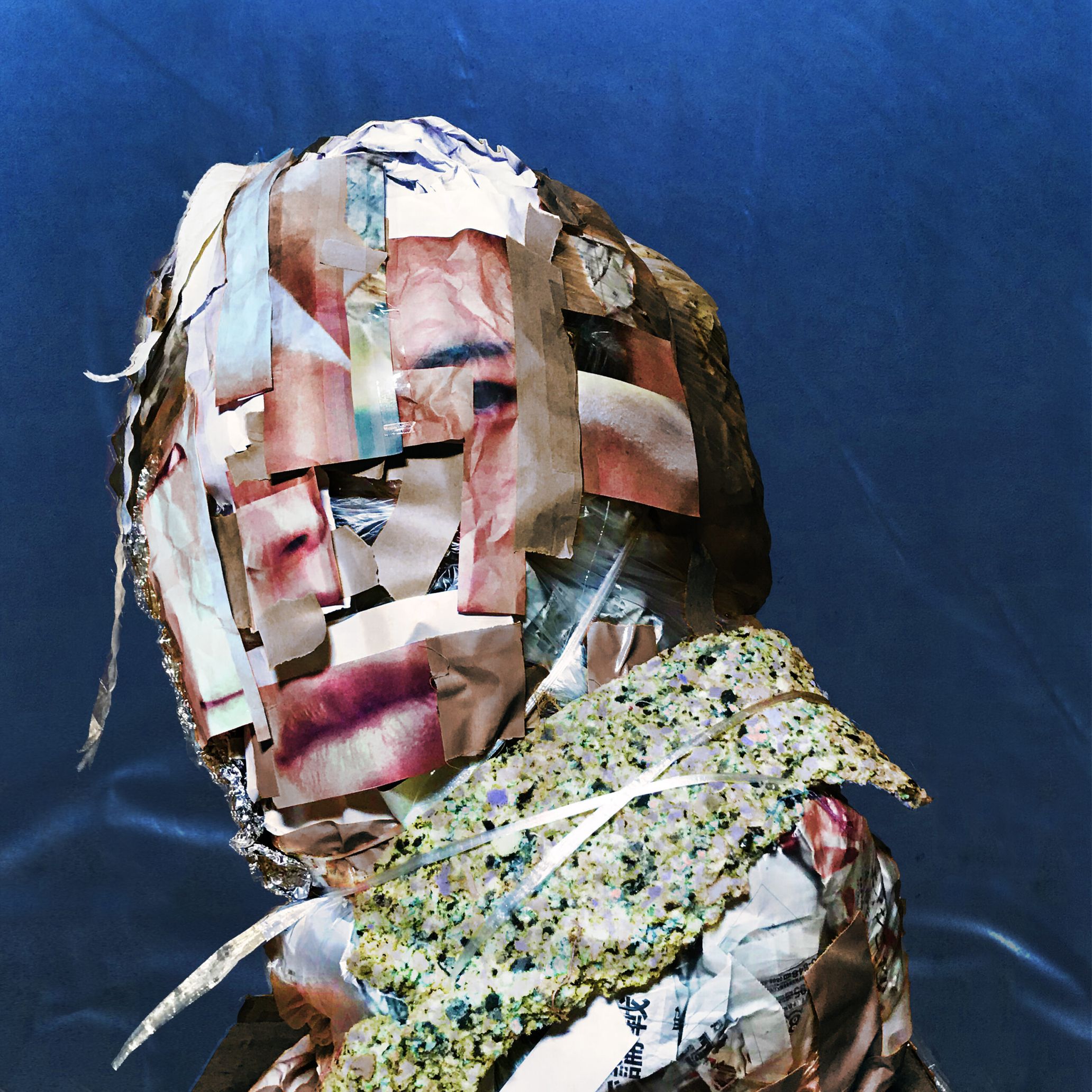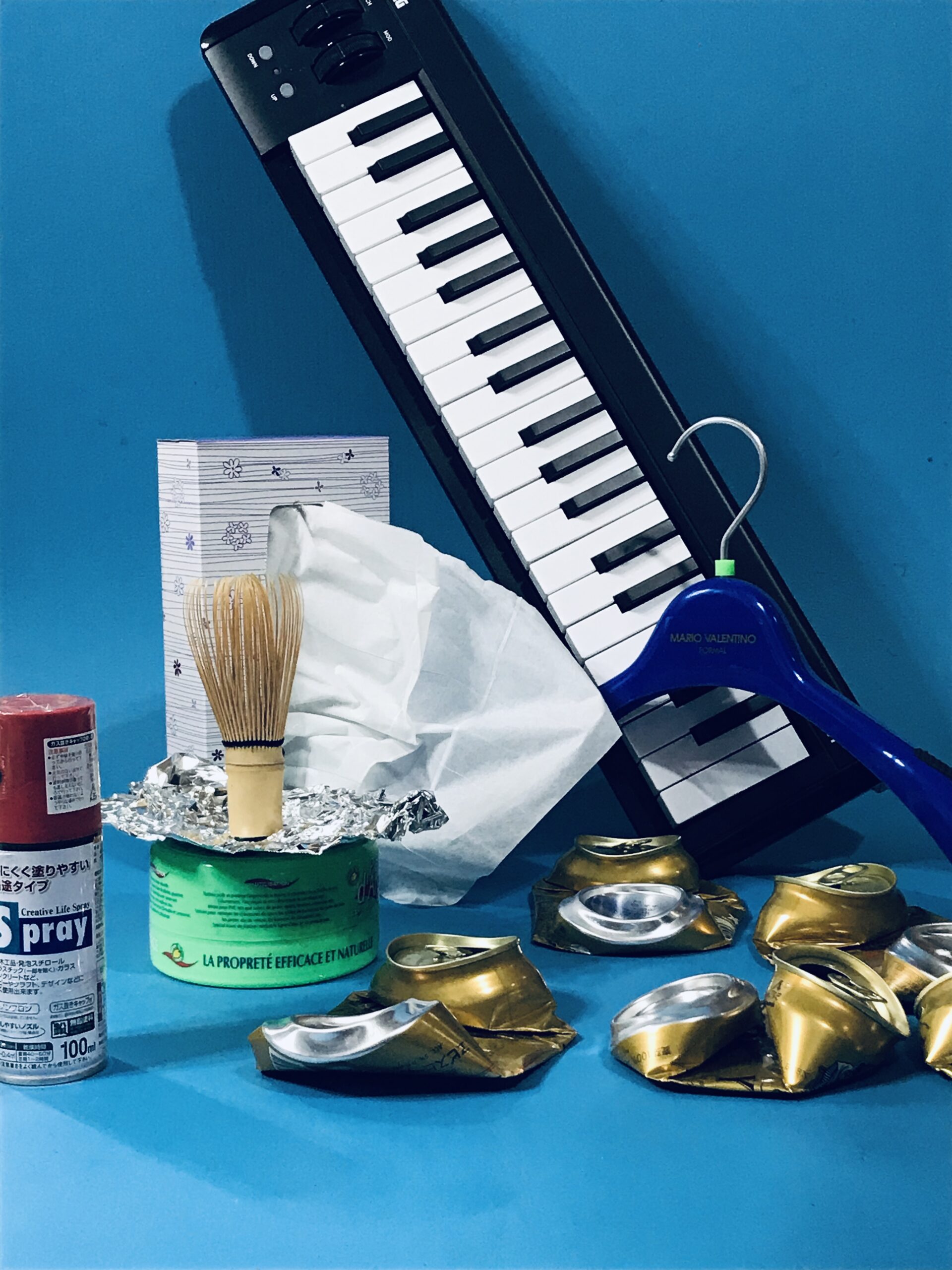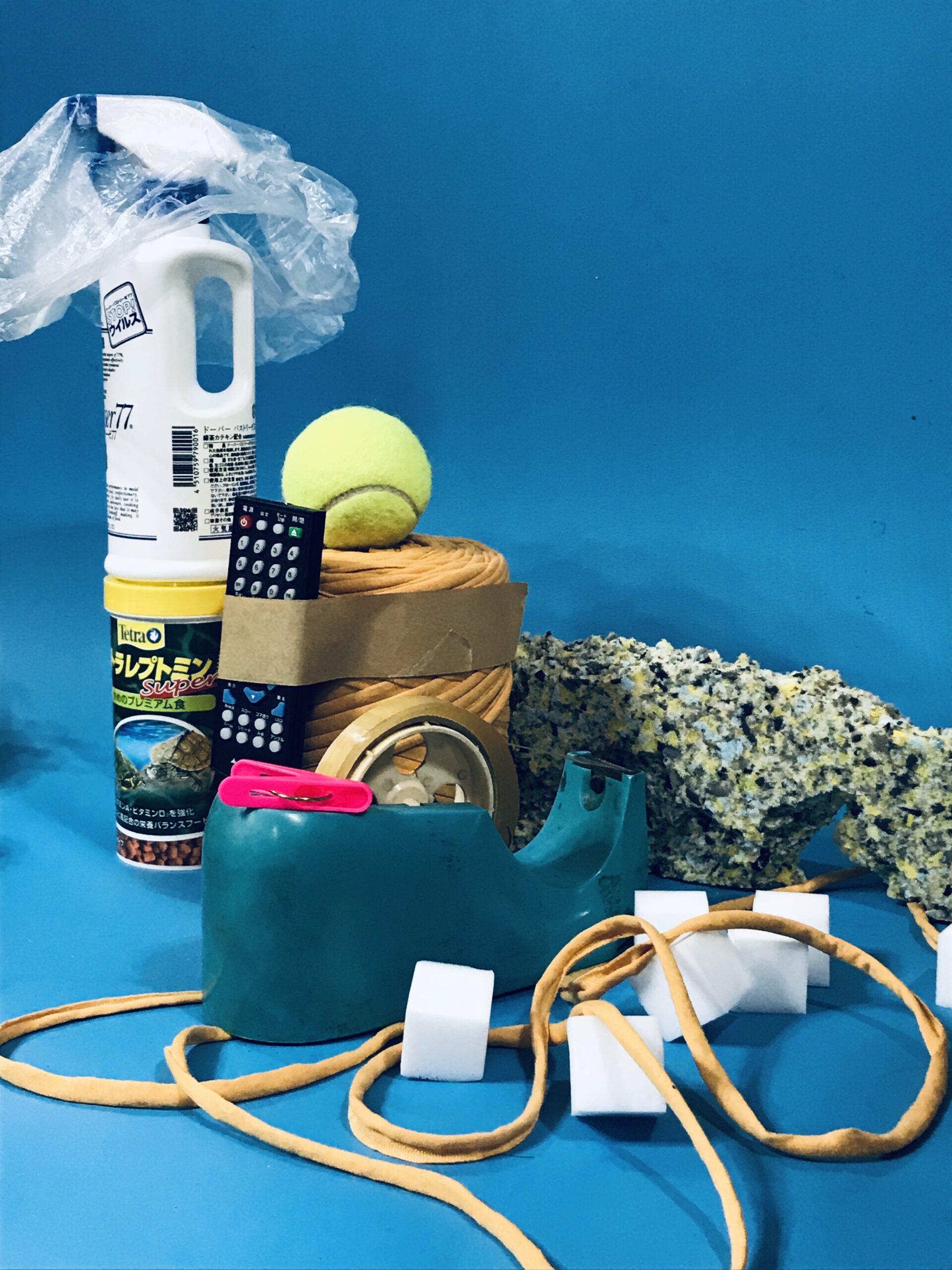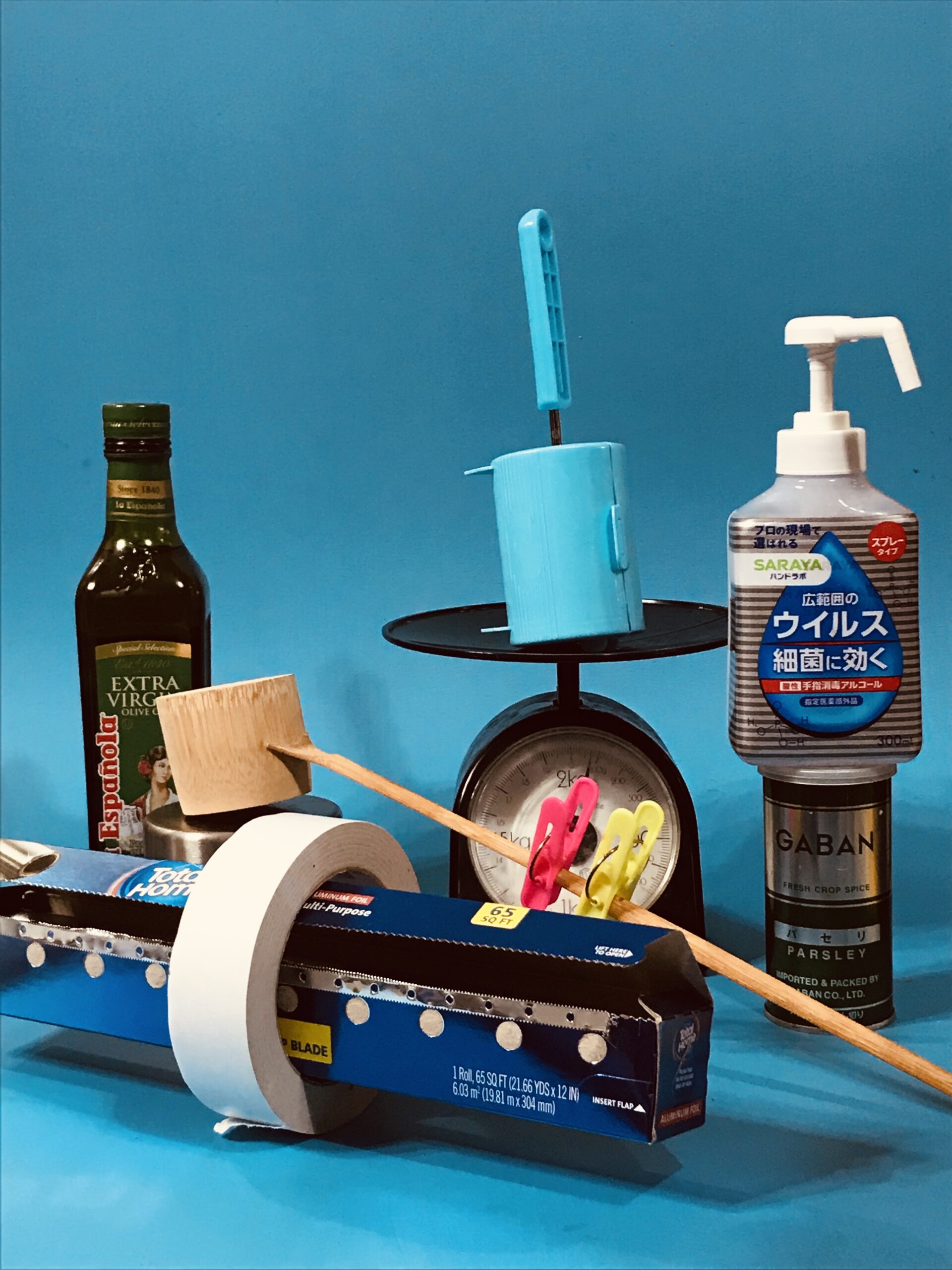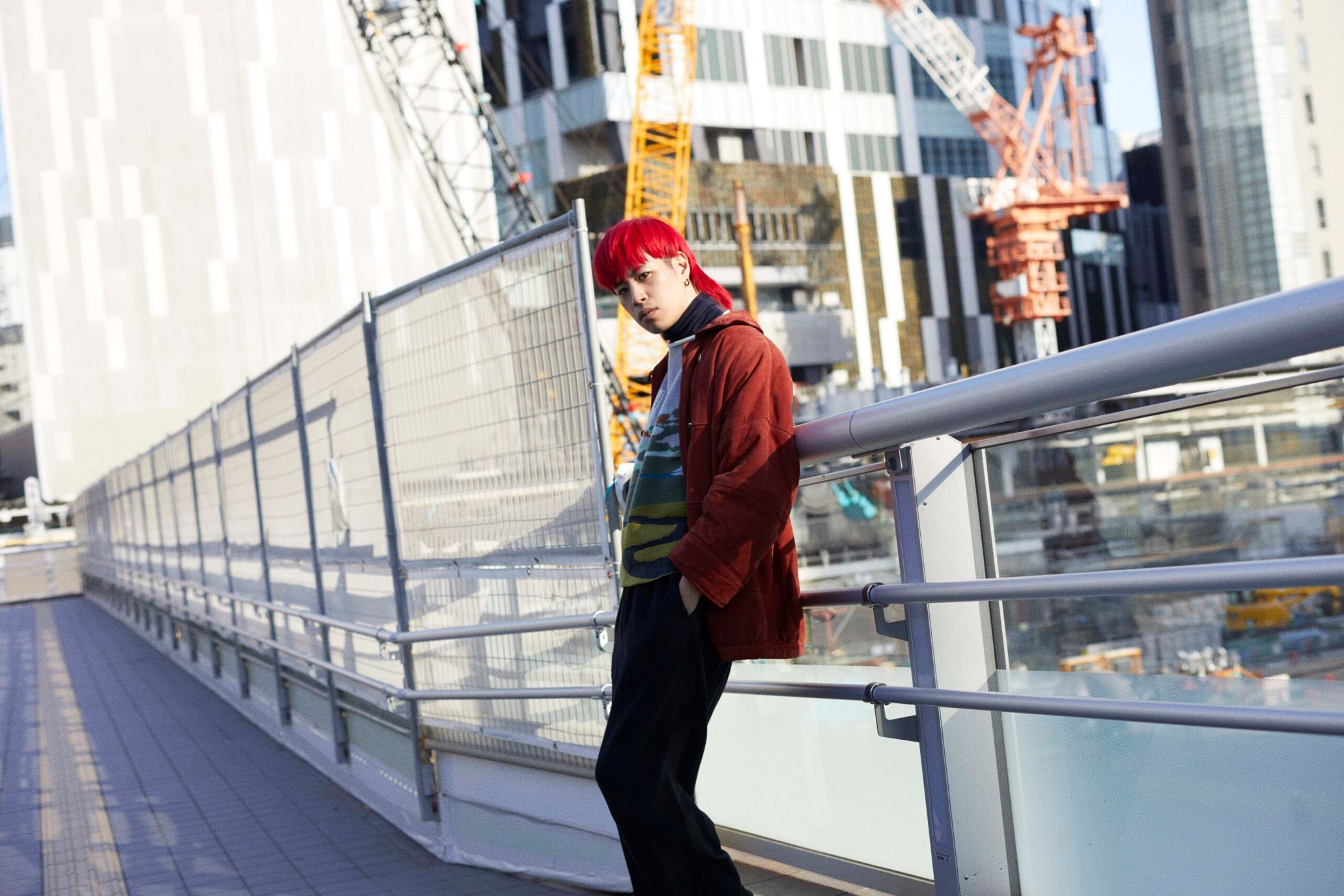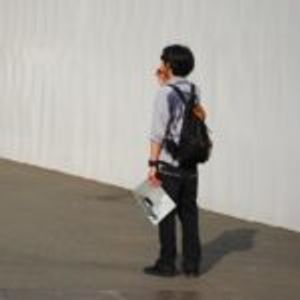After graduating from Central Saint Martins in London, MÖSHI received financial aid from Uniqlo to study at the Parsons School of Design. He harnesses the concepts and context design (a design philosophy that emphasizes the consumer’s active involvement and interpretation of a product) he nurtured at the world’s leading schools and channels them into music and fashion design. In short, he’s an artist of the new generation. We spoke to him about the current and future shape of creativity.
To go through trial and error, decide on a theme, research, analyze the era, and create work all on your own
――You work in many fields such as music, fashion, and art. Could you first talk about how you got into fashion design?
MÖSHI: I always had an interest in fashion. I wanted to study at Central Saint Martins in London, where a lot of designers I like graduated from, so that’s why I moved to the UK.
――Do you have designers or brands you like?
MÖSHI: I love Comme des Garçons’ collections. The textures are great. This energy comes from people wearing [clothes that are like] artworks. I look up to them and am inspired by them constantly. Many of my clothes are oversized and focus on textures; maybe that’s because of Comme des Garçons’ influence.
Another one is Ryohei Kawanishi-san, who graduated from Central Saint Martins. He made me want to go there. I like his work from his Landlord days (he stepped down from his creative director role in May 2020), and the message behind his Central Saint Martins graduate show and the clothes’ volume touched me.
――As you said, many of your clothes have unique textures.
MÖSHI: After I enrolled in Central Saint Martins, I studied many things like fine art, graphic design, and textile design in the foundation course. You choose what to major in during the latter half of the foundation course, and I got accepted into the textile design course. My interest in that grew even more afterward.
――Did you already decide to work in fashion across the globe at that point?
MÖSHI: After my foundation course, I studied in the fashion department, so I thought it would be nice to work with clothes in some capacity.
――After you graduated from Central Saint Martins, you went on to study at Parsons in New York, and you’re currently in a graduate program there. You also have received Uniqlo’s support. How did this all come about?
MÖSHI: Uniqlo and Parsons offer [a scholarship]. I applied to their educational support aid for the upcoming generation called TOMODACHI-UNIQLO Fellowship and received a scholarship. American universities are expensive, so there are quite a few cases where big corporations support students. I had lived in London for a long time then, so I wanted to study in a different place with a differing educational system.
――Both Central Saint Martins and Parsons are leading art and fashion institutions in the world. What did you learn the most in both schools?
MÖSHI: In Central Saint Martins, I learned how to build concepts. You don’t get lectures in classroom settings, so they don’t really teach you much. And you have a tight schedule. You have to go through trial and error, decide on a theme, research, analyze the era, and create work all on your own. More than learning about fashion itself, I trained myself on how to think. I can use this way of thinking in any situation, so it’s an asset.
At Parsons, they have an educational principle that values these things, but they also tell you to appreciate personal elements. In the past, I would reference fine art, movies, or other people’s stories. But at Parsons, you draw from your personal emotions or experiences. They taught me how important your own story is.
――It’s like you studied the logical side and the emotional side of things.
MÖSHI: Yes. I found a good balance from studying both sides.
The joy of approaching things by understanding conventional techniques, methods, the zeitgeist, and trends
――I’d like to know about your music too. How did you start your career as a musician?
MÖSHI: I started making music during my last year at Central Saint Martins. Students take a gap year between their second and third year of school to intern at big brands. But I came back to Japan to work on my creations. I figured I could use the things I learned at school and express [myself] using different tools aside from fashion.
I began making an installation using music, graphic design, and such, and was then selected as one of the finalists for the Art Installation category for LUMINE meets ART AWARD. That gave me confidence. No border separates music, fashion, and art, fundamentally; I make them all with the same mindset.
――You work on several mediums, but how do you allot your time to each medium?
MÖSHI: Since I started living in New York, I make music in the morning, go to school at noon and make clothes until midnight, and make music for two to three hours after I get home. I also go to fun events, depending on the day. I still make some music every day.
――What’s your music-making process?
MÖSHI: I first make a track or use an instrumental created by a friend and then make the flow or melody. I think of the words after. I often reflect my personal thoughts in the lyrics.
With music and fashion, you need context. If you make something only you like, no one will listen [to your music] or wear [your clothes]. It’s fun to approach things by understanding conventional techniques, methods, the zeitgeist, and trends and then finding a new idea within that.
――That mentality is close to the philosophy of contemporary art.
MÖSHI: It’s the same. High fashion collections like John Galliano’s have the same thinking. It’s the education of Central Saint Martins. I’m sure many schools teach students like, “Let’s try to create this kind of feeling.” But if you produce something with no substantiation, then it won’t reach an audience. I’m very aware of the context [of the times].
I make tracks with the same mindset. Anyone can make something that’s out there, so I break it down, think about how I can reach people, and make them think it’s something new. I make personal lyrics according to that.
――You released your EP, #13G 10009, last December. This title is your apartment number in New York. Do the songs illustrate fragments of your daily life there?
MÖSHI: Yes. I lived in London for a while, so it was a huge change for me to move to New York. My environment changed, and I didn’t have friends at first. It allowed me to look at myself. I wanted to put that sentiment and vibe in my EP.
――I’d like for you to explain the tracks off the record. The first song, “Back And Forth,” is about the things you felt in New York, right?
MÖSHI: Yes. I came up with that while waiting for my flight at JFK airport to go home for winter break. Pause Catti (a musician who’s a part of Laastc, the collective MÖSHI’s in) sent me a 15-second demo loop he made for himself. It was great, so I rapped on the beat. The song is about what I can do as someone who goes back and forth to different countries and doesn’t stay in one place.
――The second song, “On My Way Back,” is about going through lockdowns in New York.
MÖSHI: It takes around 15 minutes for me to walk to school from my house. I think about various things when I walk, especially when I go home after working all day. After we had our lockdowns because of coronavirus, I wondered if we could ever go back to normal life.
――I feel like you express a state of mind instead of your daily life on the fourth track, “Calling.”
MÖSHI: Out of all the songs on the EP, I think this has the most aggressive lyrics. I usually don’t say edgy things, but Pause Catti and I were talking about how it’s key to acknowledge our overconfident side like, “You can’t keep up. We’re more creative than you, and we’re confident we can prove that.”
――The fifth song, “Brooklyn Bridge,” and the sixth song, “Crystal,” feel cinematic.
MÖSHI: I enjoy watching movies, so I exaggerated what I see in my everyday life and created a movie-like narrative. When I was crossing the Brooklyn Bridge, I truly felt like I was in New York. That was the impetus for me to express my memories and connections with people, as though I were projecting them onto a screen.
――There’s this cool vibe that runs throughout the entire EP. How do you discern what’s good and not when you make music?
MÖSHI: I still haven’t made that much music, so my experience as a music listener plays an important role.
――What kind of music did you listen to?
MÖSHI: When I was in middle school, I borrowed a Blue Note CD from an older student, and I found out about Black music. After that, I discovered jazz musicians like Robert Glasper, electronica music from Ninja Tune and Warp Records, and contemporary hip hop like The Internet. I feel like I’ve come across interesting music from my generation.
I began to be able to tell what I liked, of course, and what I didn’t like. At Central Saint Martins, I was told to write the ideas and processes I had (for creating something) in my sketchbook. They told me I couldn’t get rid of what I wrote, even if I didn’t like it. I asked why and they told me to think about the answer. Perhaps I place importance on listening to music I don’t like to find out what sort of music I should do as MÖSHI.
――I’m assuming you make things on your own. Is there a reason?
MÖSHI: If I need someone else’s help with a theme or concept, I ask for it. But I get stubborn when I make something, so it’s hard for me to work with other people.
It’s better to think positively than negatively towards reality
――You’re in Laastc, a collective of art students in New York, London, and Tokyo. I’m more familiar with teams or crews, but what sort of gathering is a collective?
MÖSHI: One goal is for us to collaborate freely. In hip hop, you have crews, and with projects, you have teams; I feel like these could be strict. Perhaps collectives are more loosely made. In Japan, people in the art industry often create a collective.
I initially liked Odd Future (OFWGKTA), and I looked up to them because of how much fun they had. People trust each other and do their own thing freely and without restraint in collectives, whether that’s music, graphic design, or fashion.
――What’s next in store for Laastc?
MÖSHI: Each person has an interesting background, and they approach this like, “Let’s do a lot of things, not just music,” just like me. I hope we could showcase something with one concept and numerous mediums at a gallery. We’re still halfway there.
――A lot of situations have changed because of coronavirus, but have you had any changes too?
MÖSHI: Not at all. I go with the flow in life (laughs). Of course, New York had lockdowns because of coronavirus, and my school was closed too. I had projects to work on for school, but the fabric stores were closed, so I was like, “I’m going to make clothes from plastic.” I also thought I could come back to Japan if I couldn’t stay in New York.
There are so many things we can’t control aside from coronavirus. There’s no point in being flustered, and it’s better to have a positive mindset than to be pessimistic towards reality. I thought about what I could do to stand out in this situation.
――What kind of action did you take?
MÖSHI: When Pause Catti and I were considering what we could do with our music, we thought it wasn’t like us to perform at our friends’ events or promote our work online. So, we decided to make high-quality music first and gain the trust of those in the music industry.
Tower Doors by Tower Records introduced us. I performed on Rookie A Go-Go by Fuji Rock Festival 2020 and got in touch with Victor Entertainment. Of course, I need to focus on social media in the future, but I want to always come up with the best thing to do in any situation.
――Out of all the things you do, what do you want to do in the near future? What’s your vision? Do you have any information on your releases?
MÖSHI: When I had a shoot for my promotional photos, I created an installation and space. I made the cover art for the EP too. Similarly, I want to make crossovers between music, fashion, and art.
I enjoy coming up with concepts; I want to create one, whether it’s personal or social, and use the optimal tools to realize it.
Also, I released my new single, “Painting,” on April 7th. I produced the track, arranged it to a certain degree, and had 1e1 from Laastc play the guitar and Kazuki Muraoka mix it. I want people to listen to it alongside #13G 10009.
MÖSHI
MÖSHI is a musician and fashion designer based in New York. After graduating from Central Saint Martins in London, he gained support from Uniqlo and enrolled in a graduate program at the Parsons School of Design in New York. He was a finalist in 2017 LUMINE meets ART AWARD’s art installation category. He has also performed in Rookie A Go-Go by Fuji Rock Festival 2020 and 100byKSR. Tower Doors by Tower Records has also promoted him. MÖSHI is also a part of Laastc, a collective with art students in New York, London, and Tokyo.
the-moshi.com/
Instagram:@moshi_the
Photography Teppei Hoshida
Text Analog Assassin
Translation Lena Grace Suda




